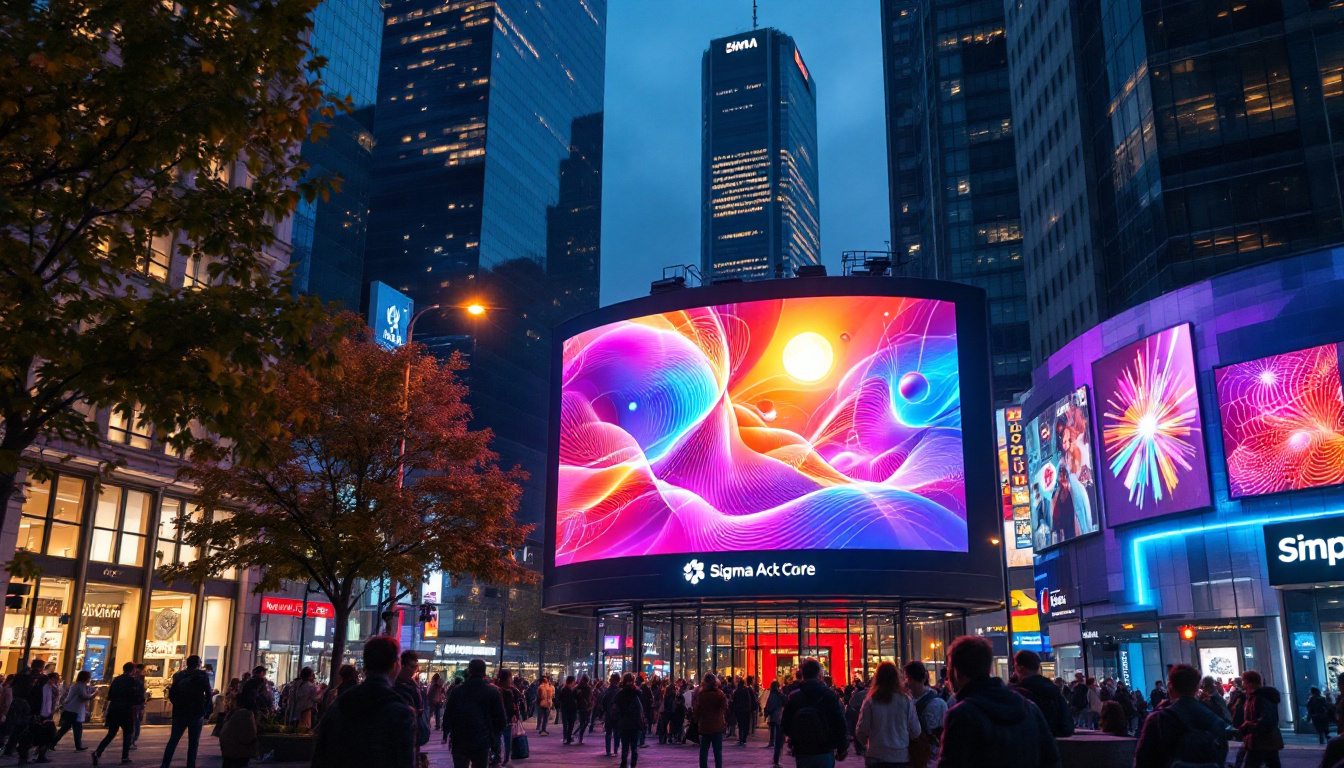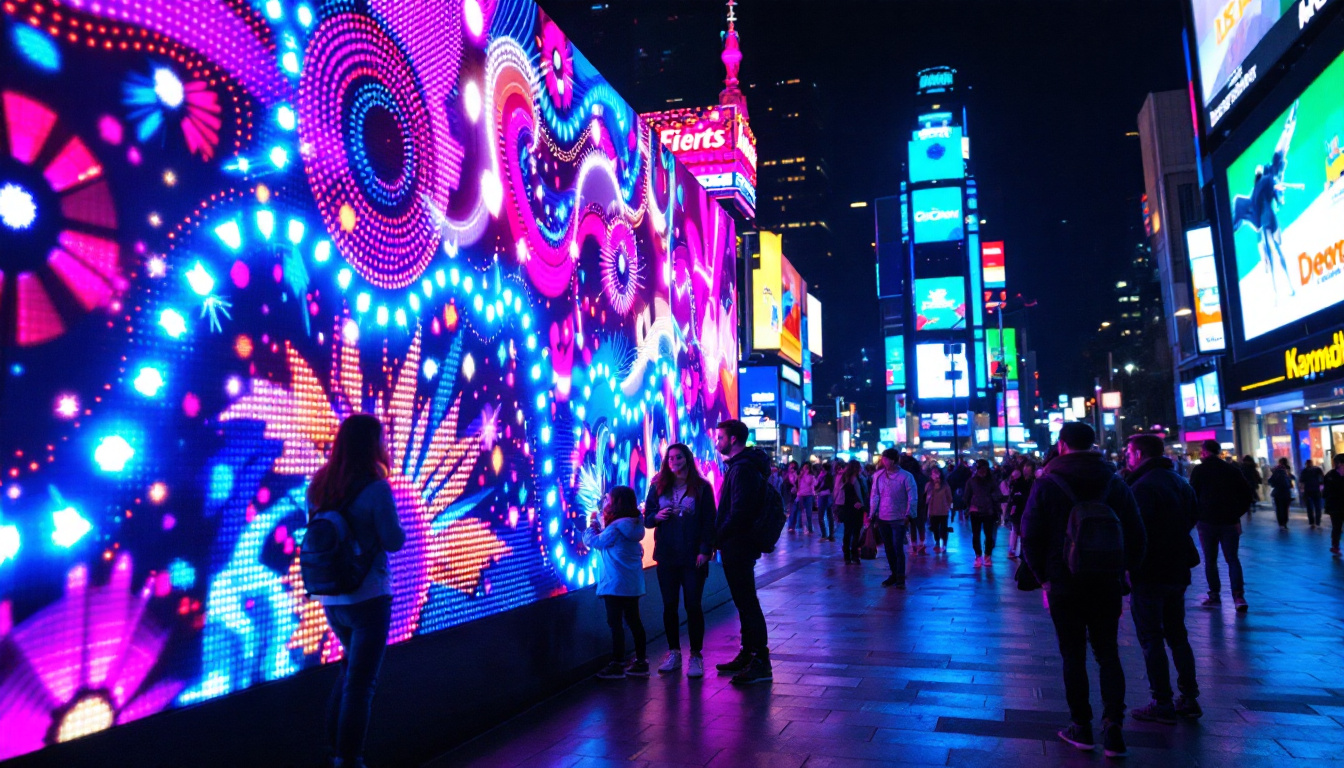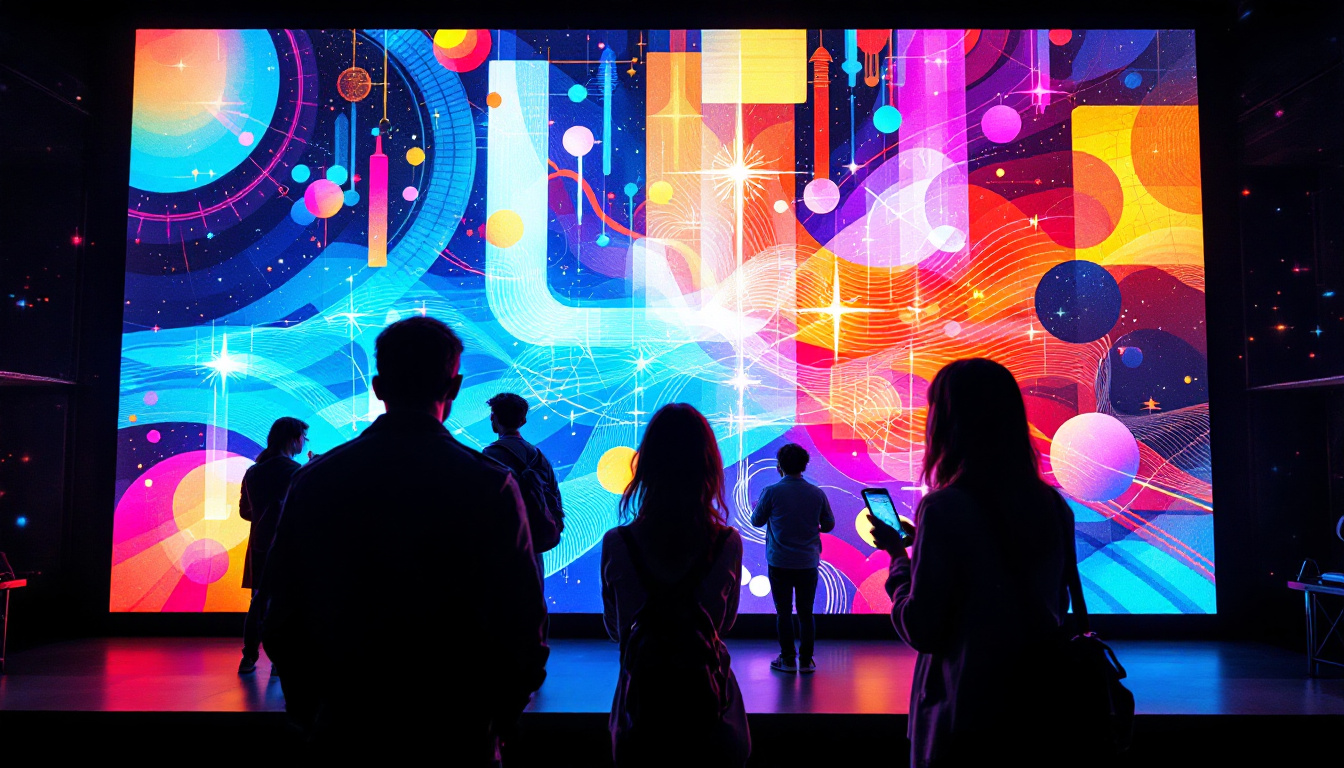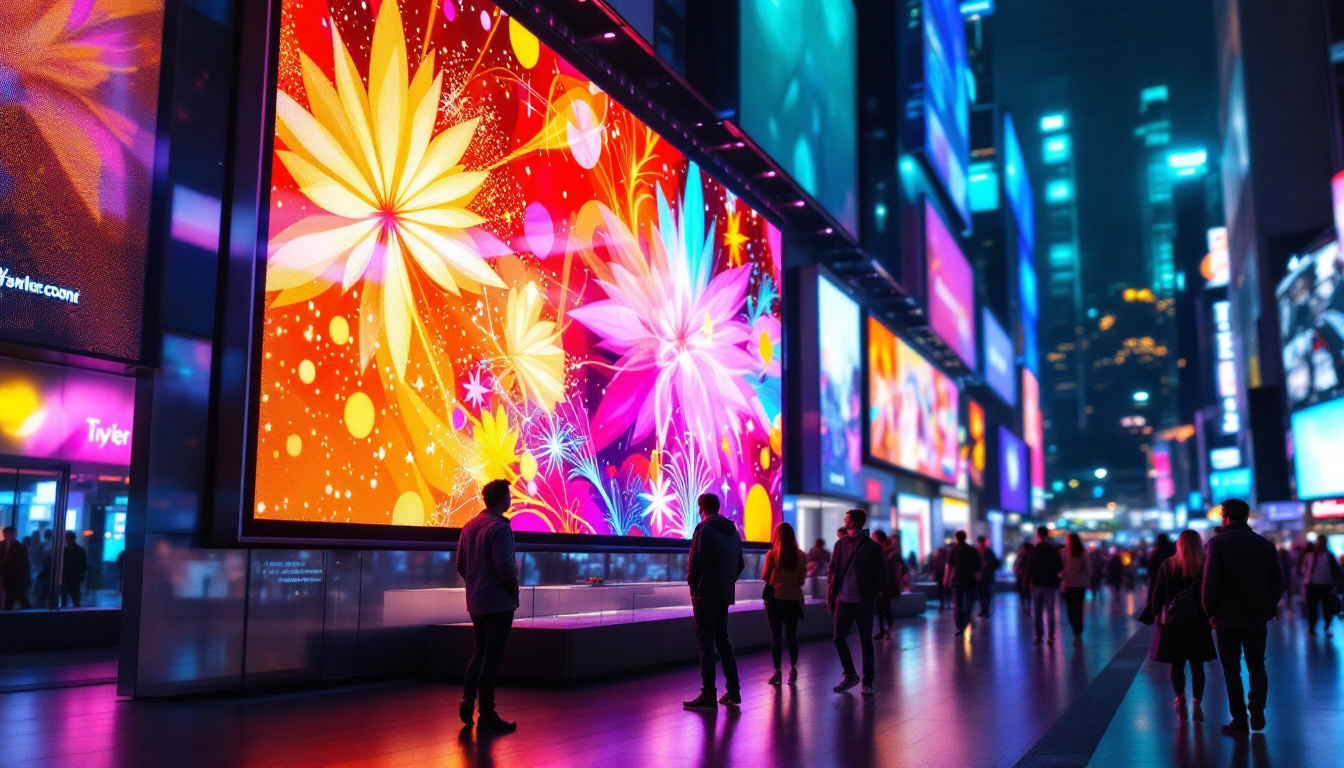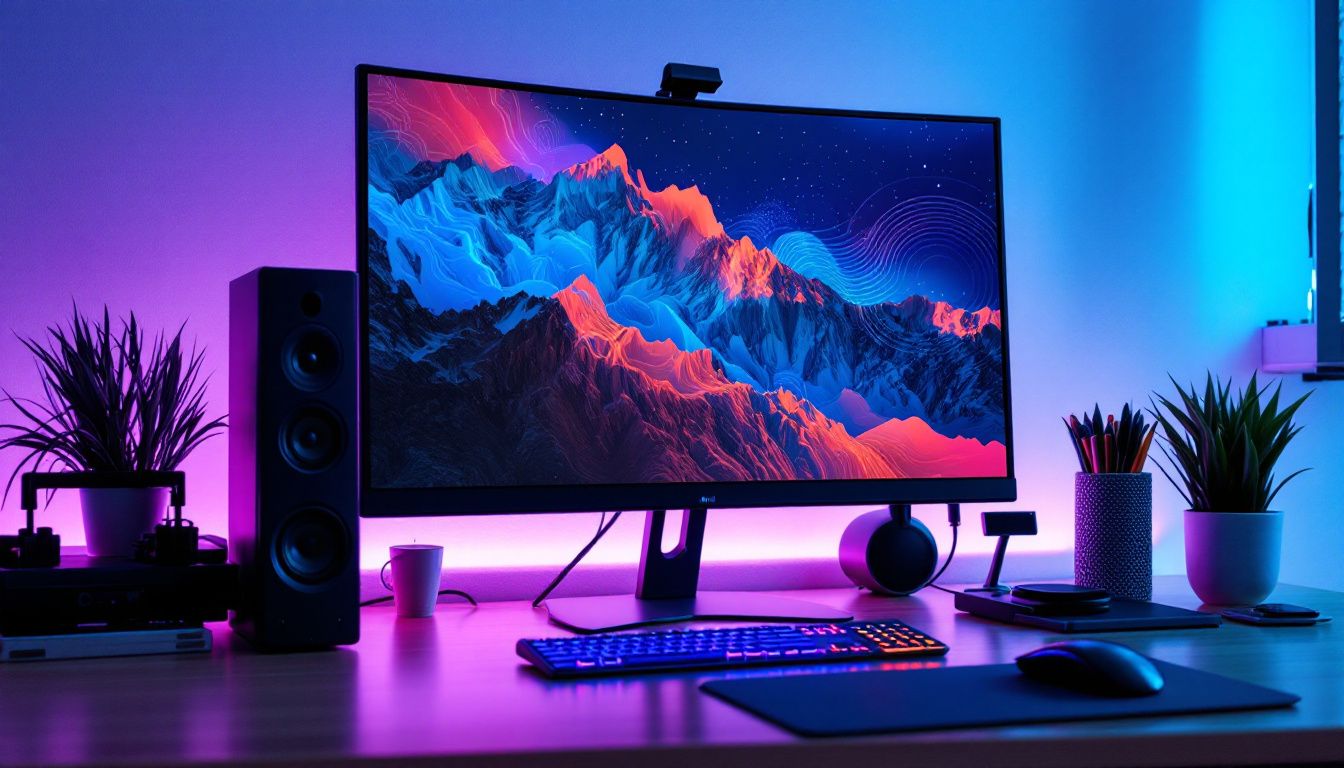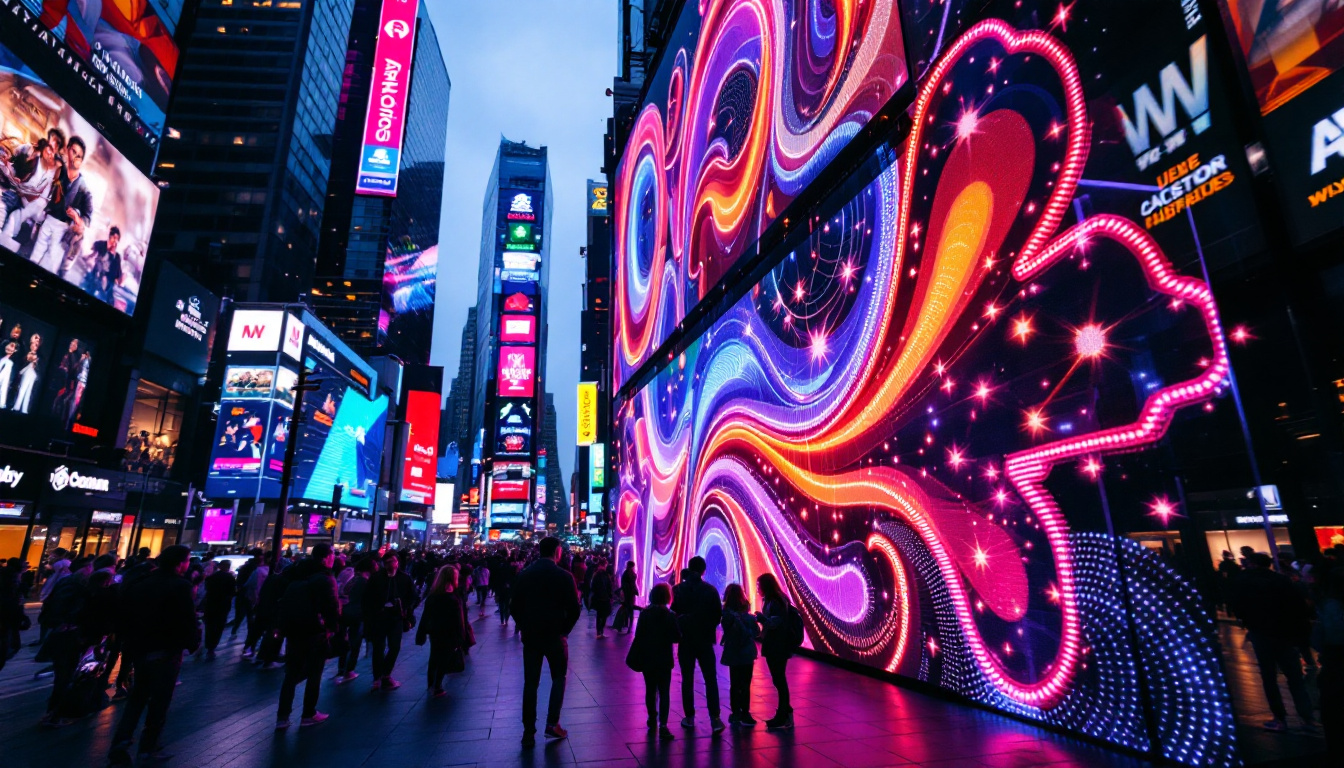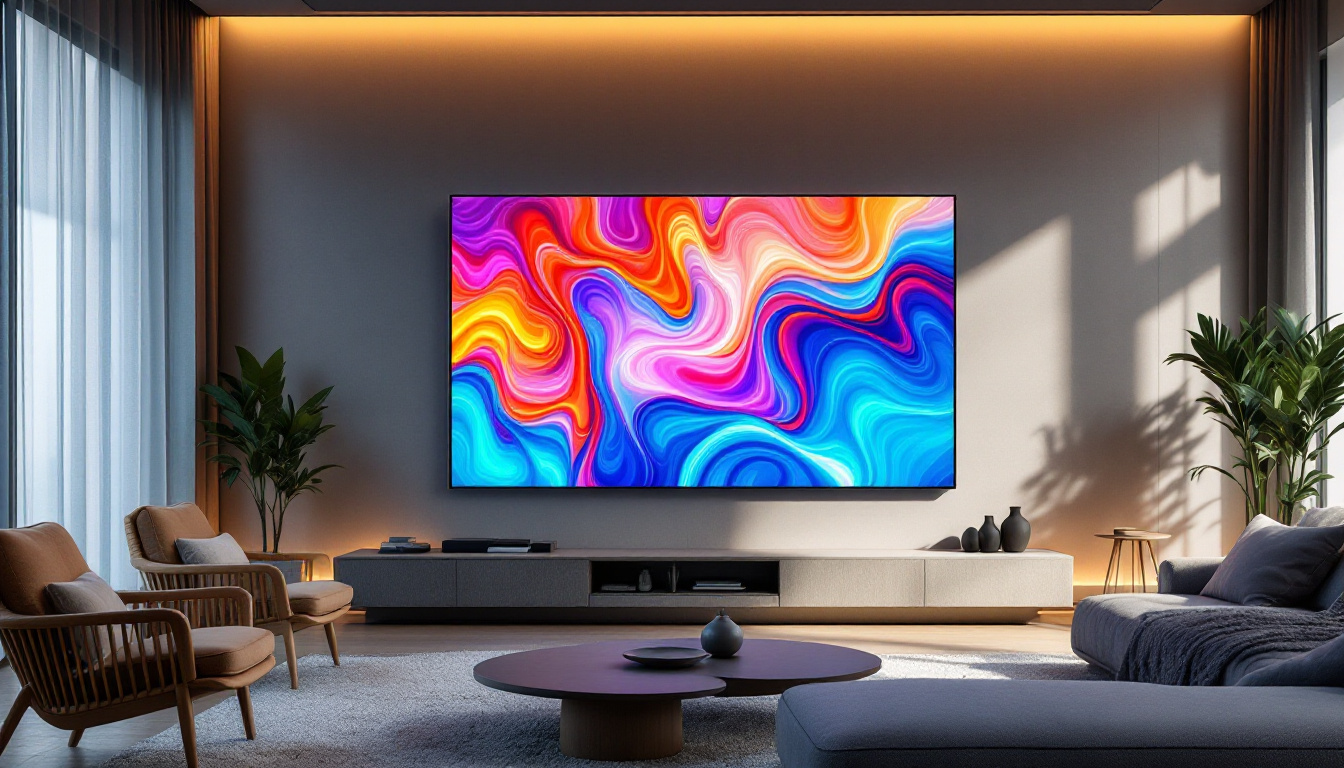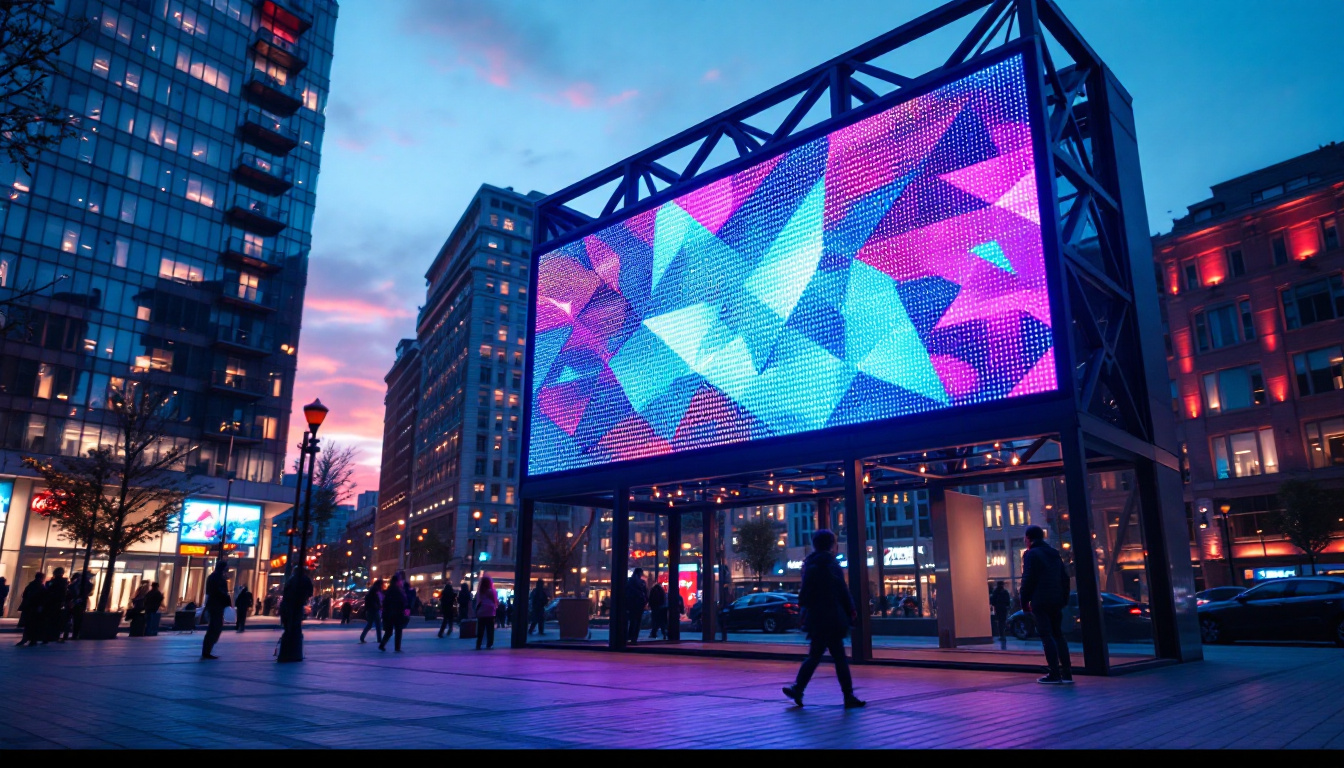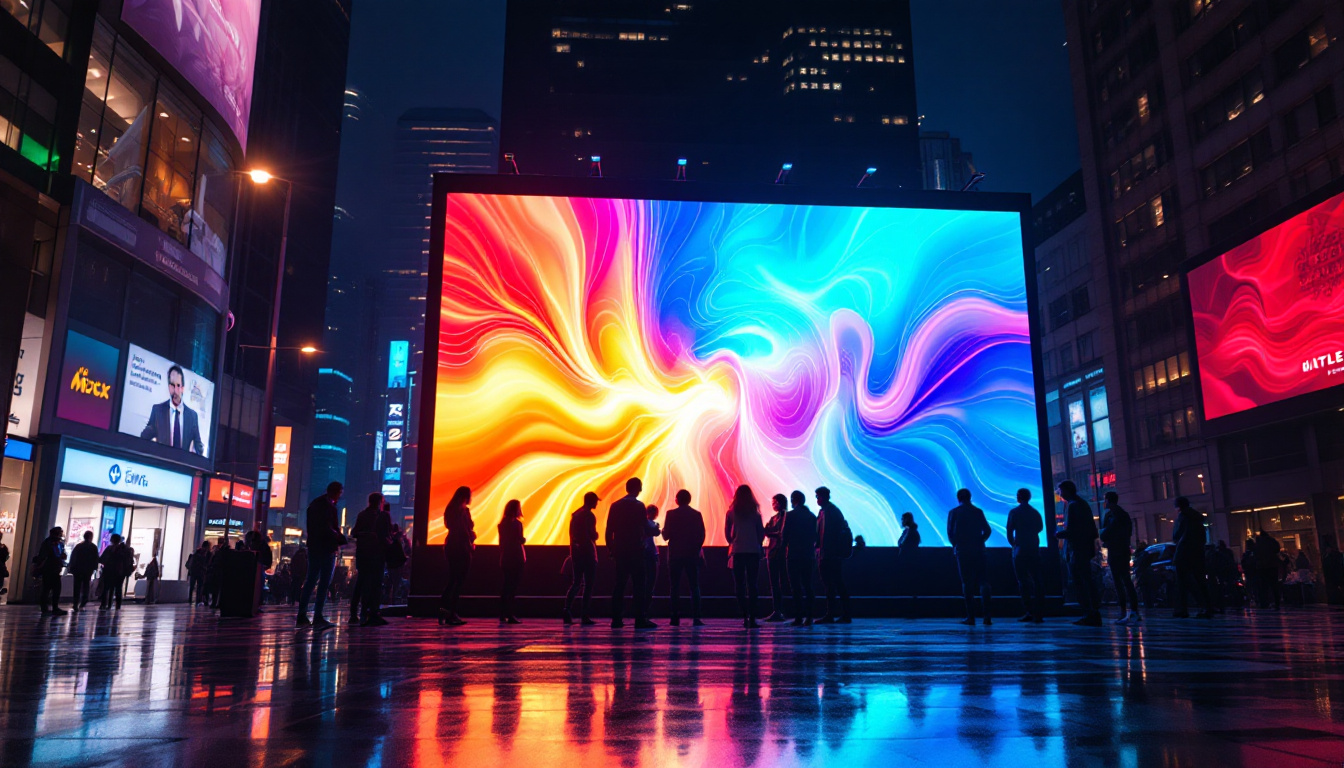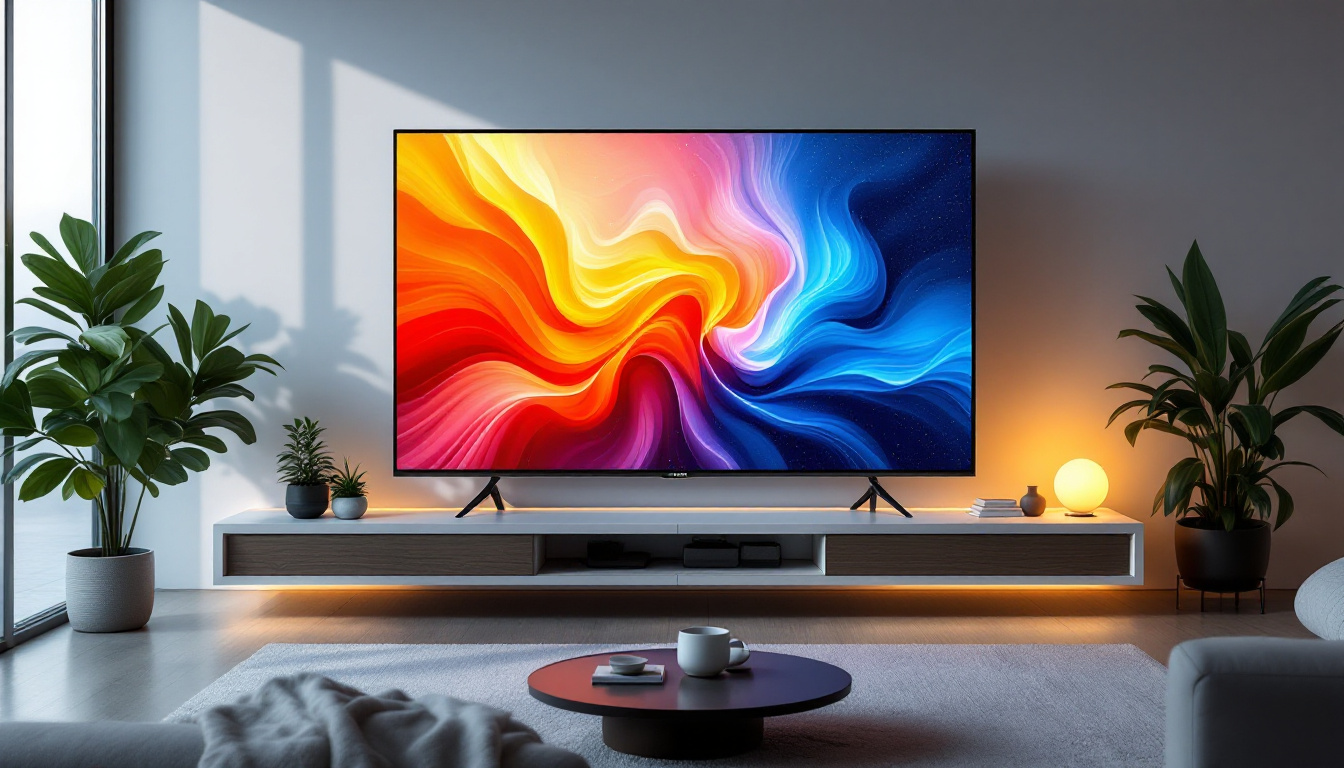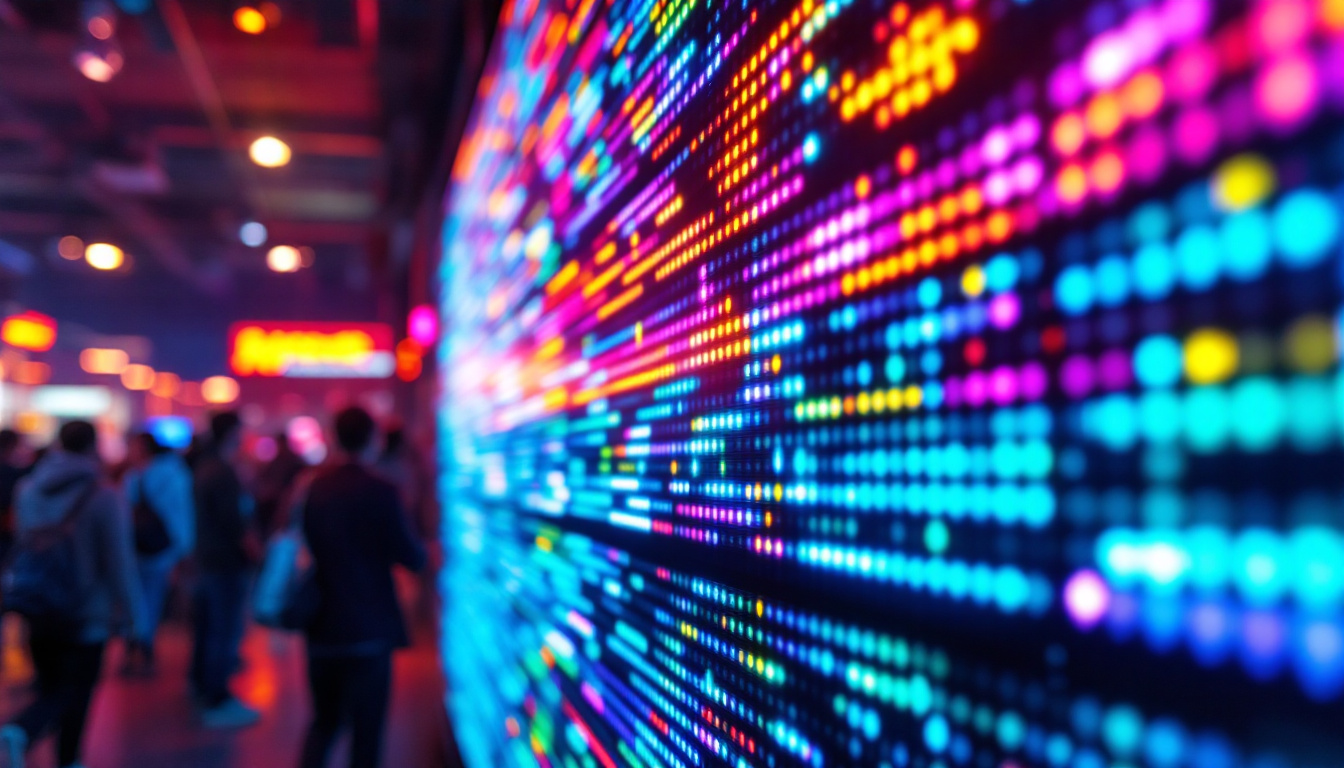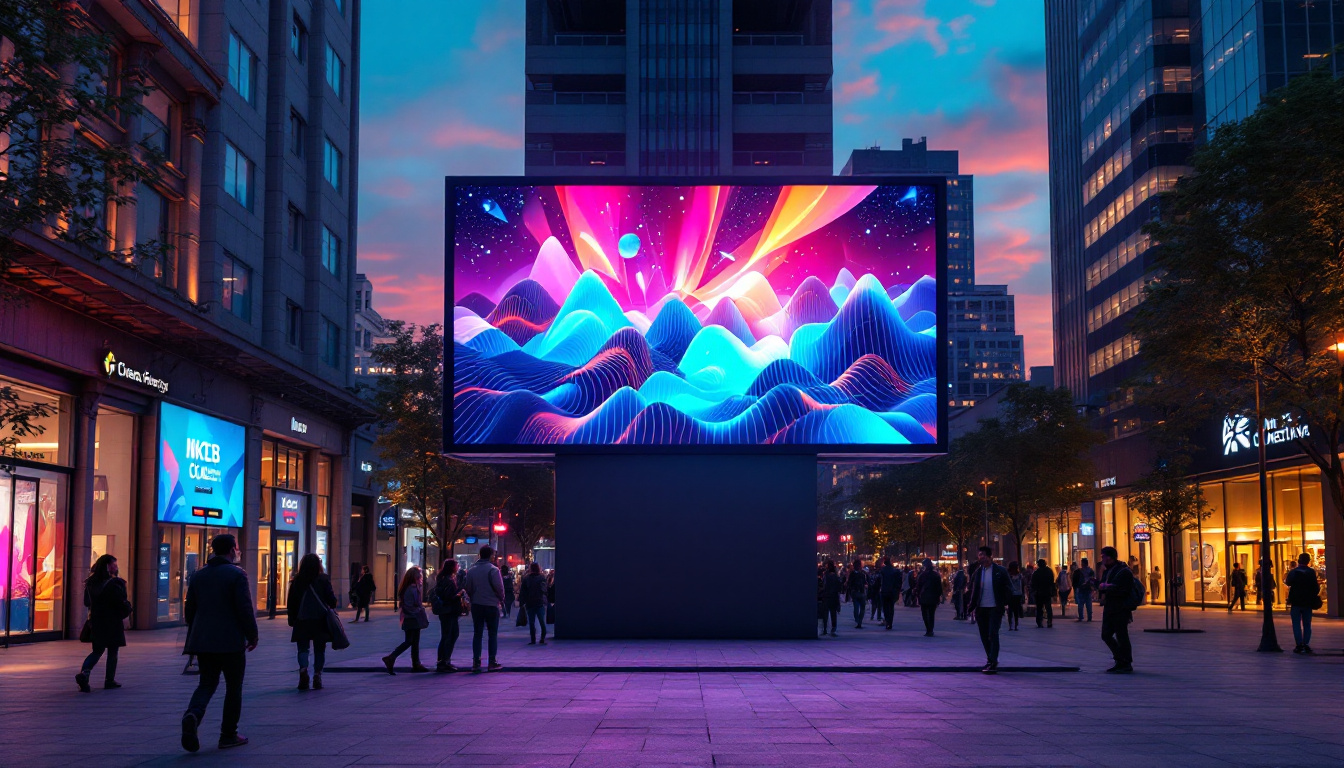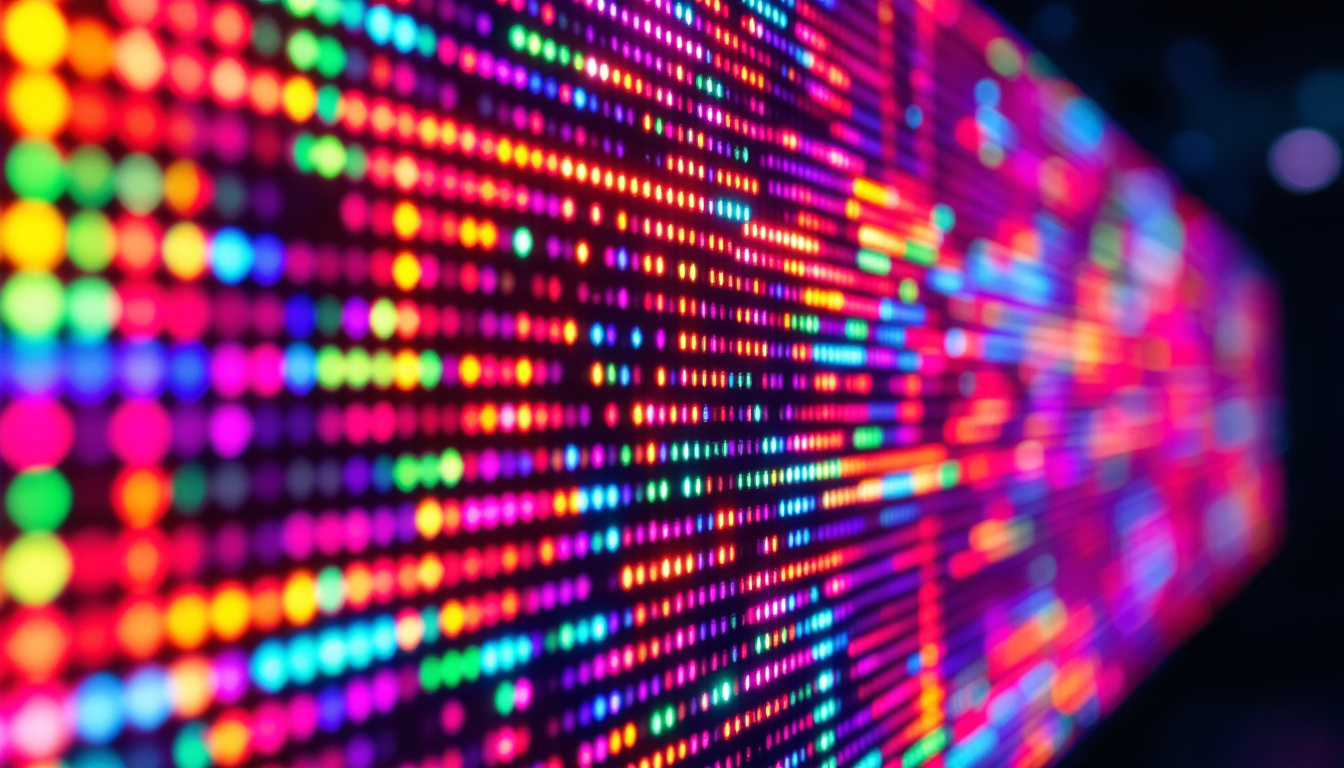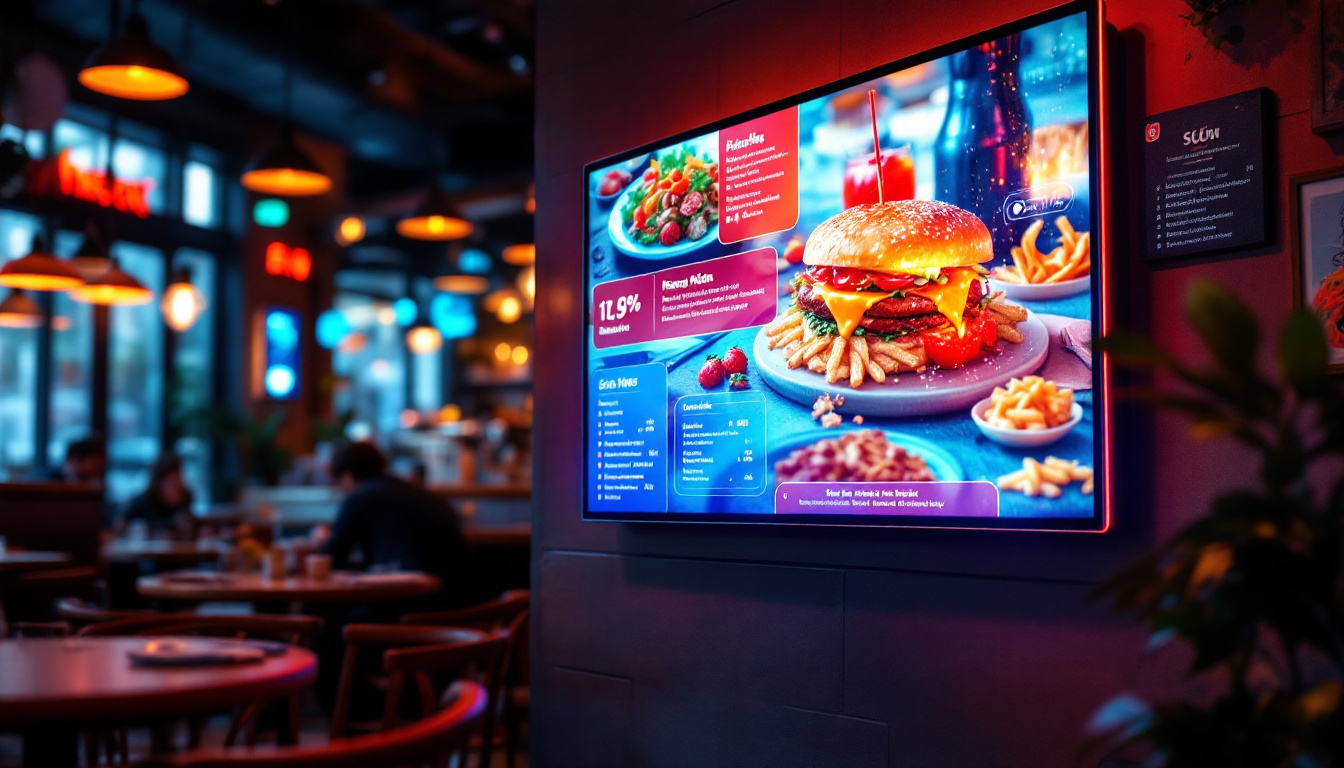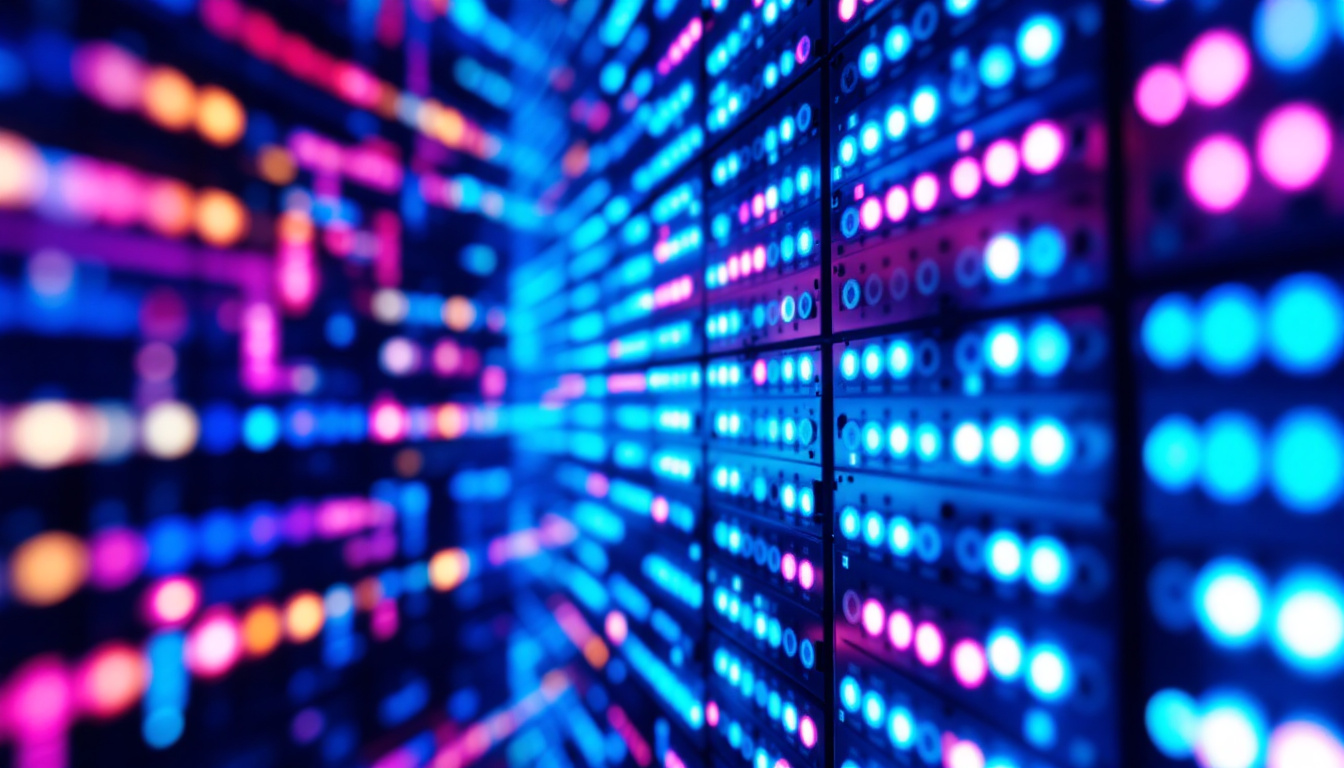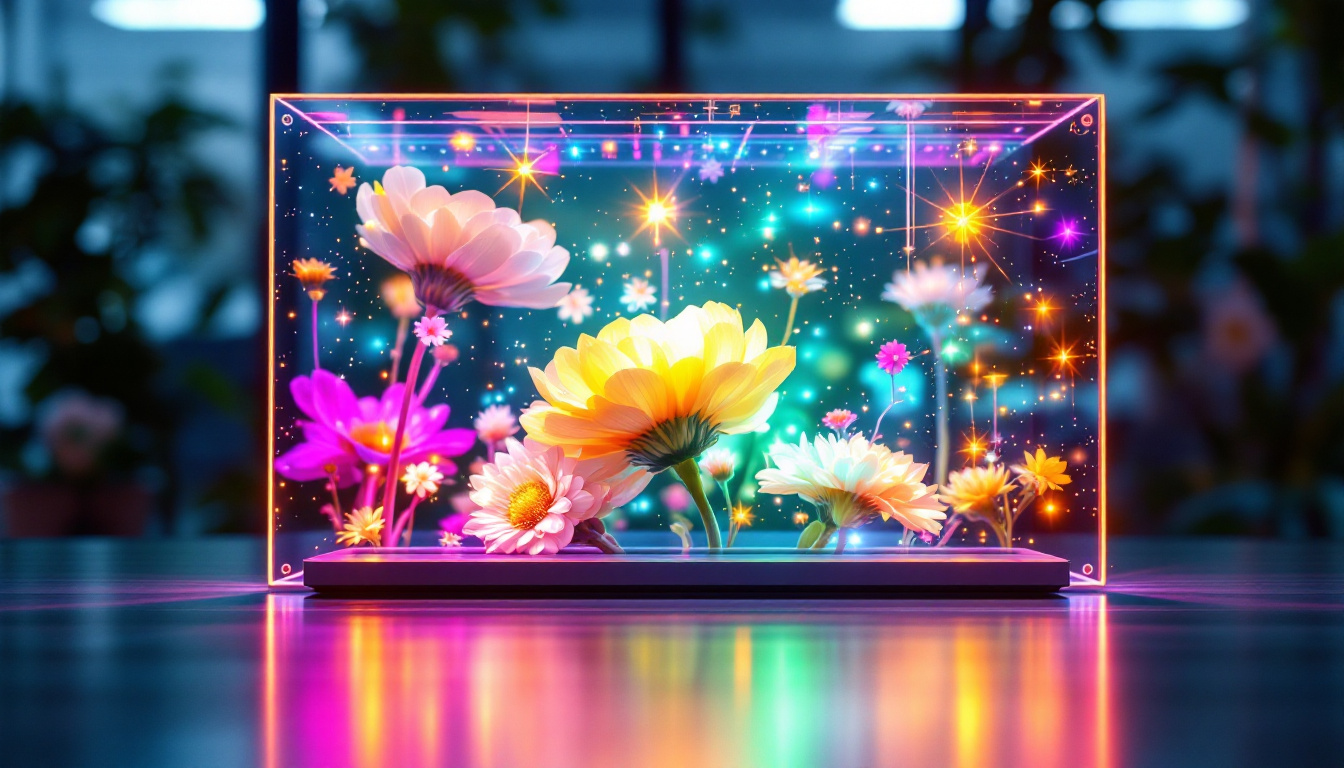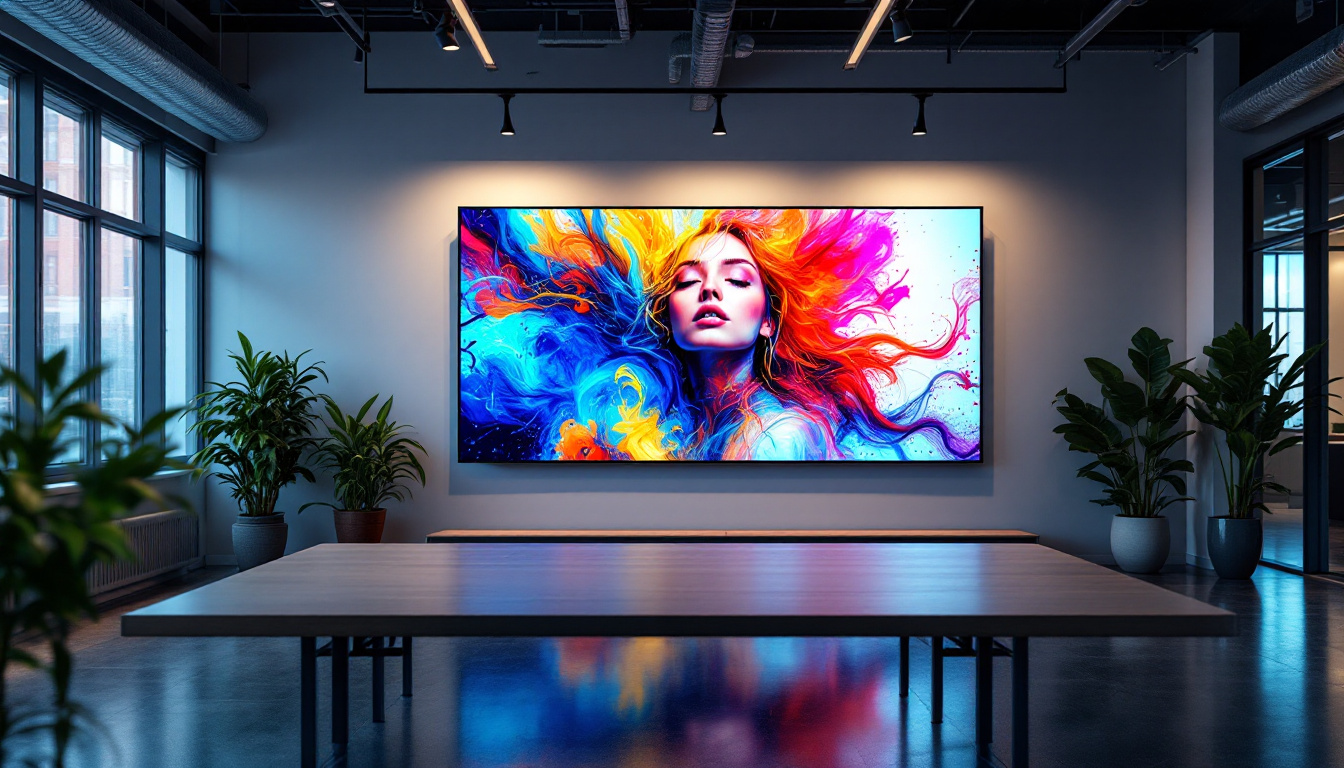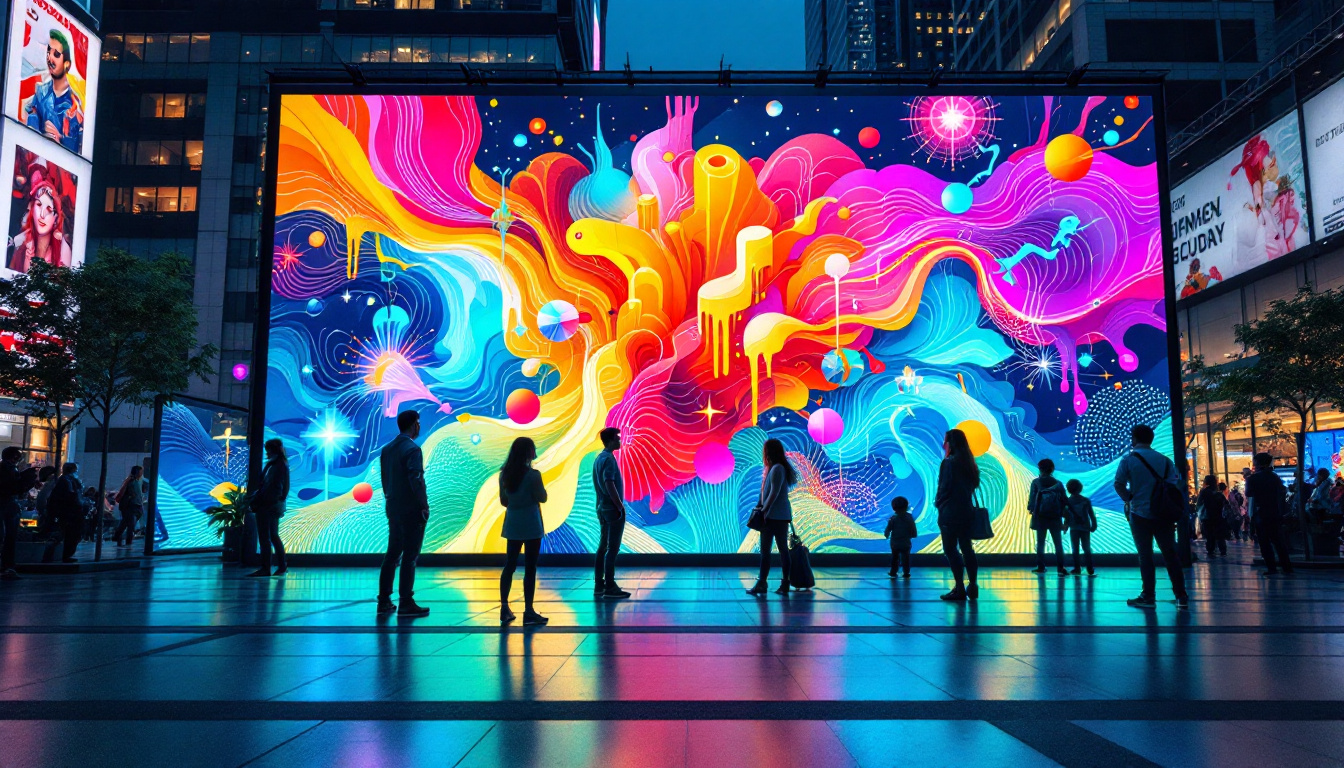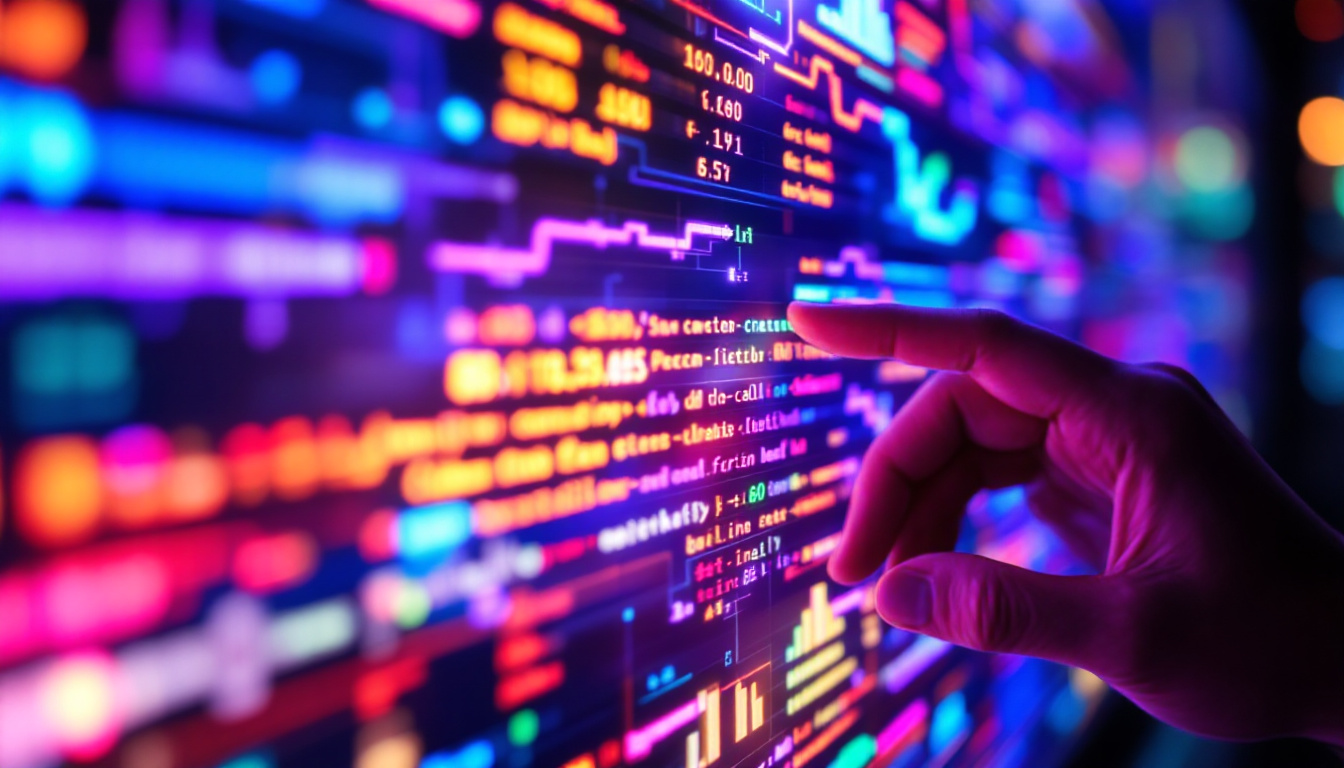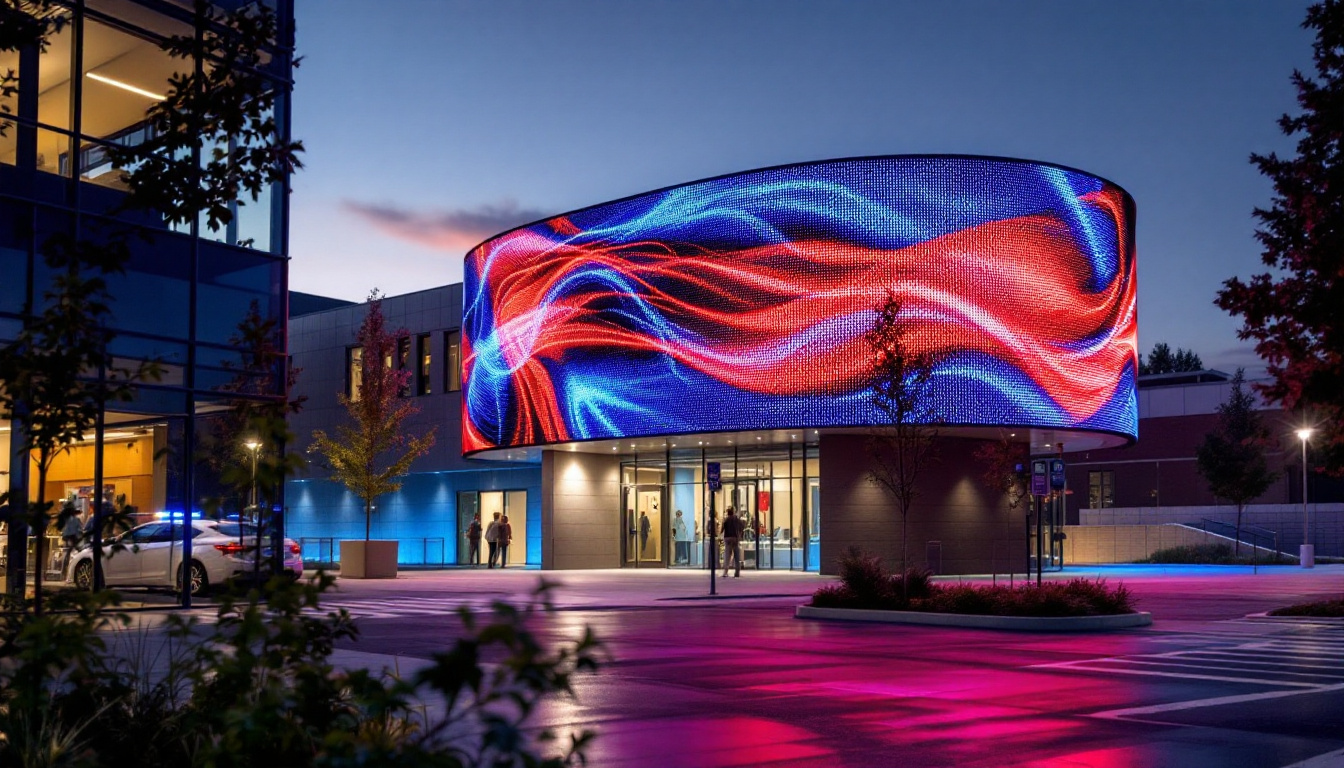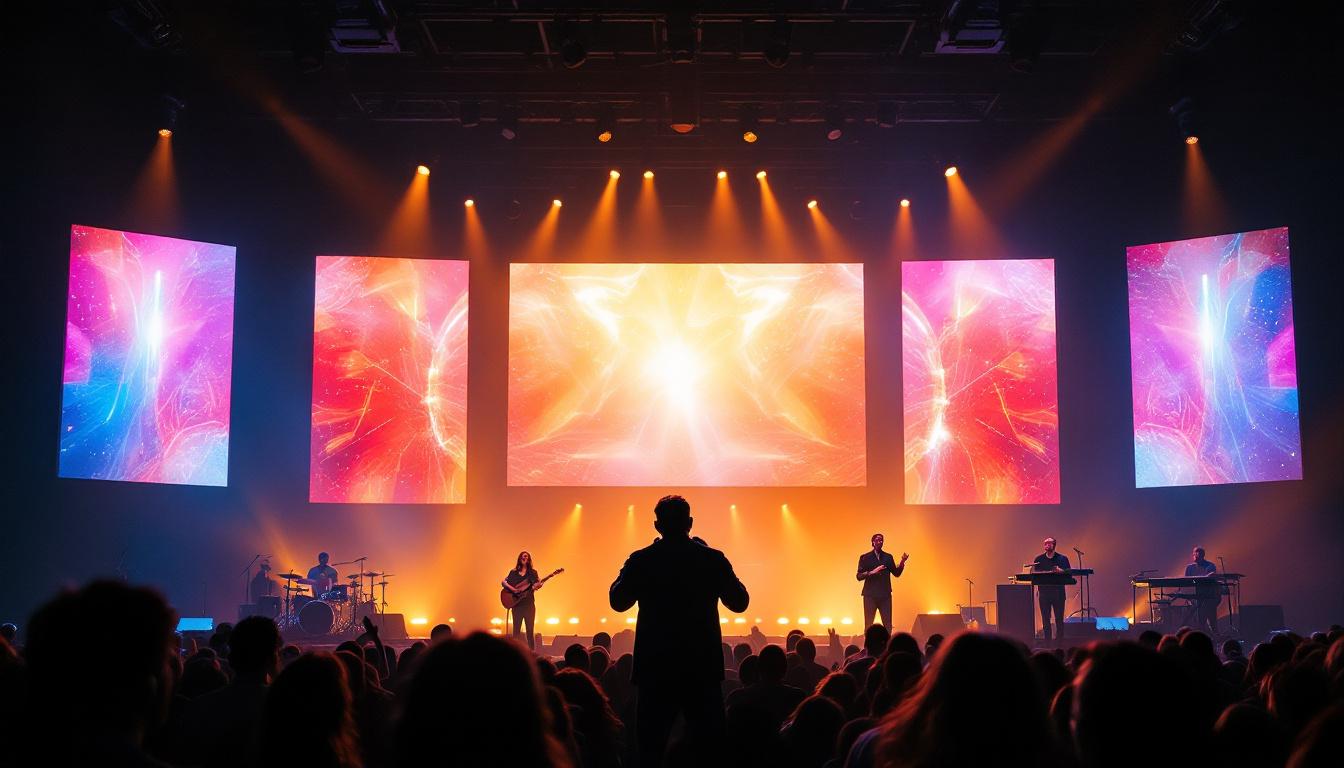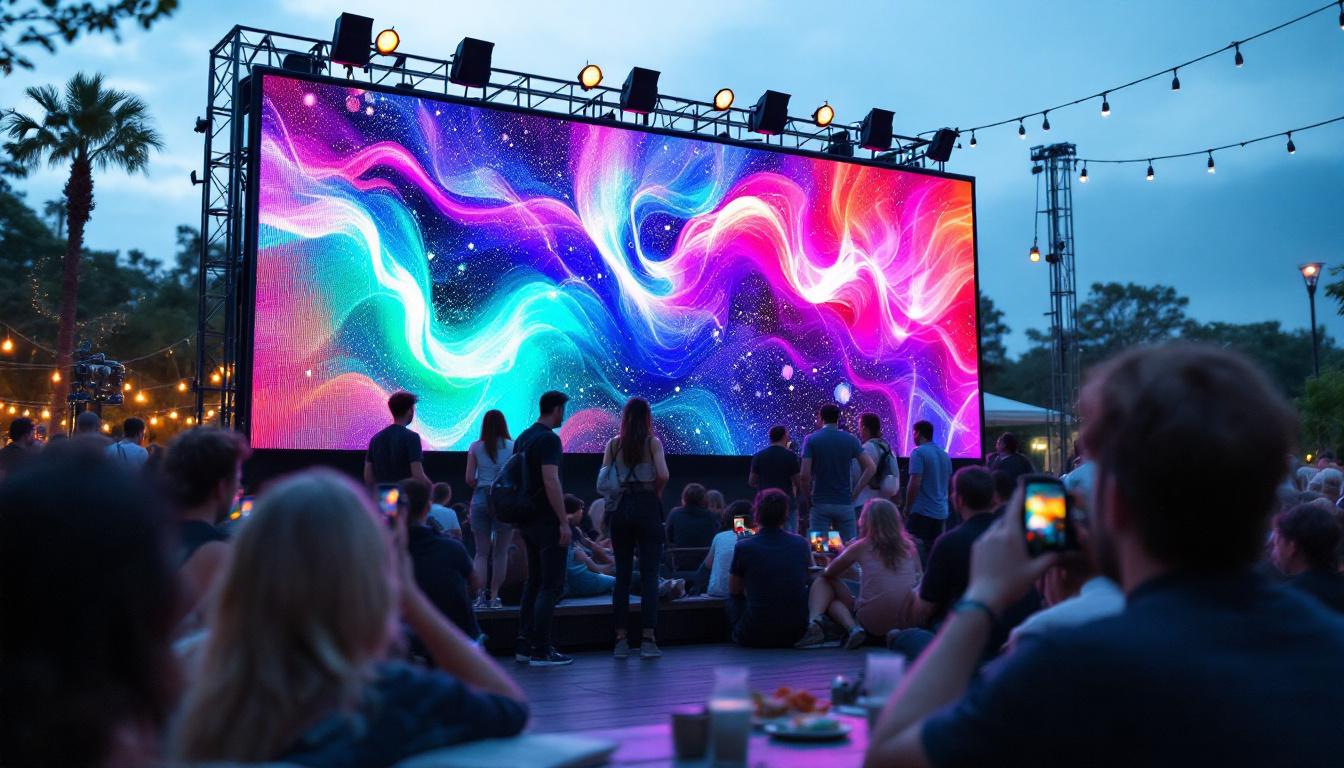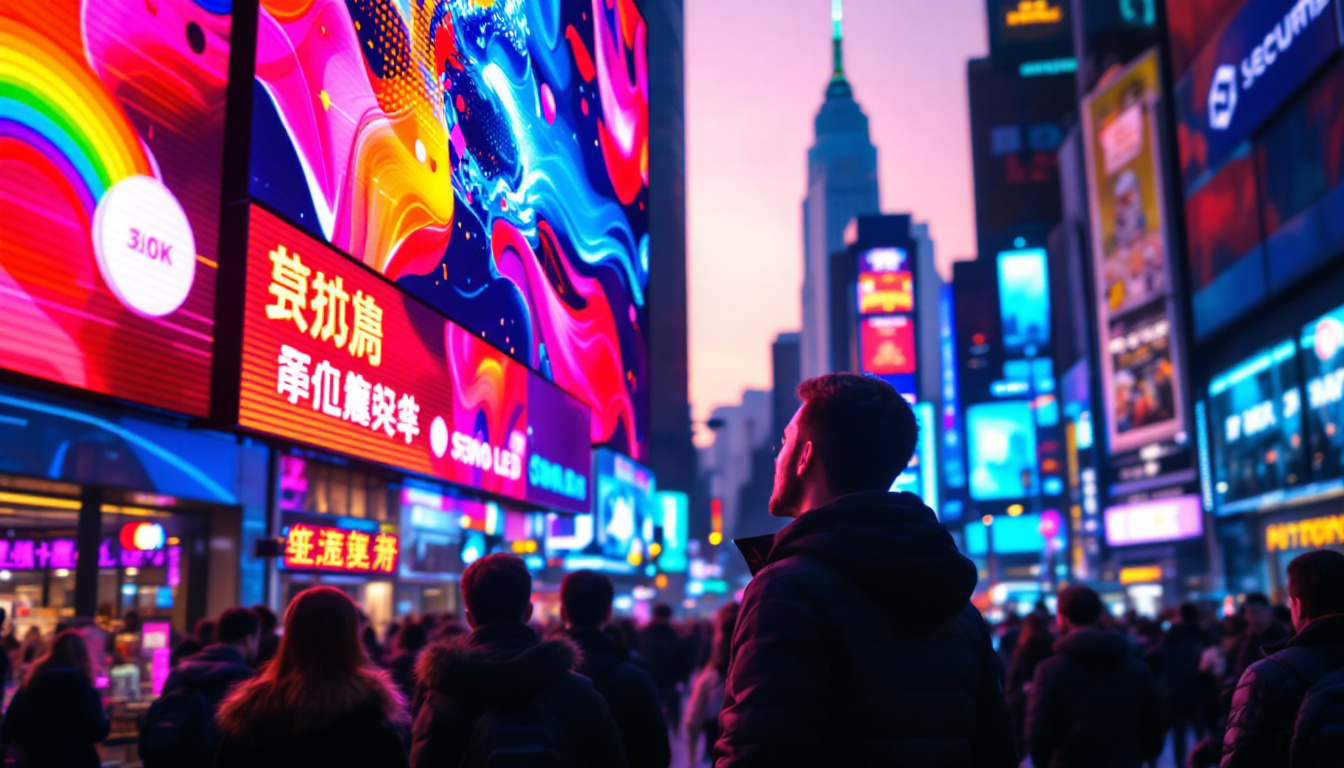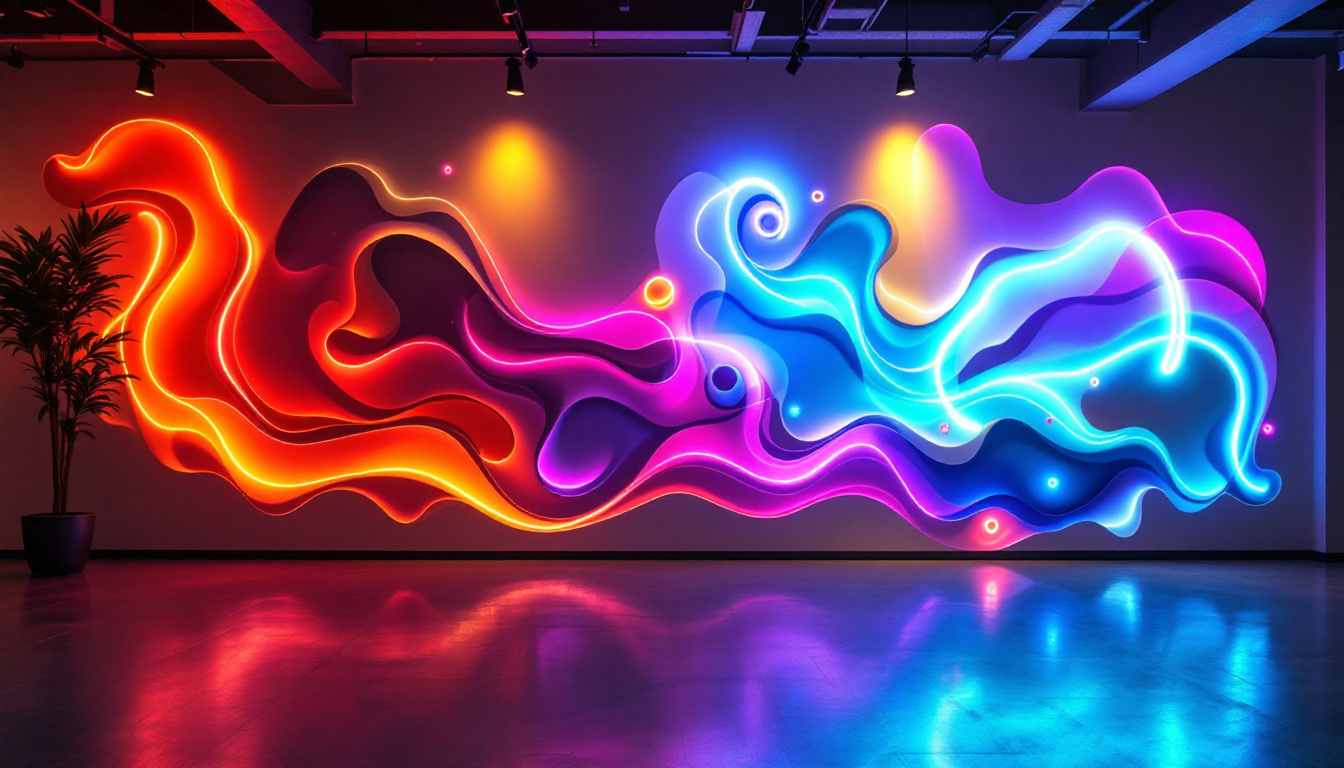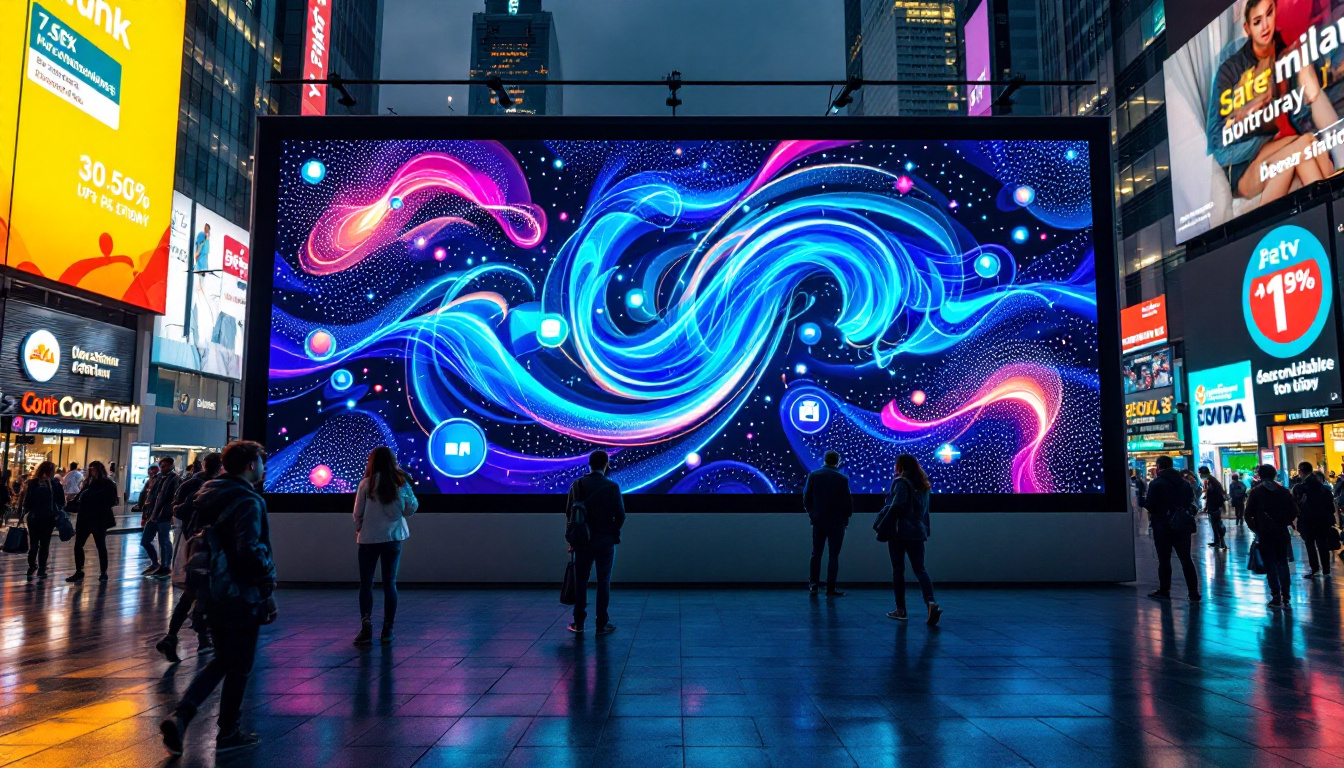In today’s fast-paced digital world, visual communication has become paramount for businesses looking to make an impact. One of the most effective tools for achieving this is the commercial LED screen. These vibrant displays are not only eye-catching but also versatile, serving a multitude of purposes across various industries. This article delves into the intricacies of LED displays, exploring their technology, applications, benefits, and future trends.
Understanding LED Technology
Light Emitting Diodes (LEDs) are semiconductor devices that emit light when an electric current passes through them. The technology behind LED displays has evolved significantly, making them a popular choice for commercial use. Understanding how these screens work is essential for appreciating their advantages. LEDs are not only energy-efficient but also have a long lifespan, which contributes to their growing prevalence in various applications, from home lighting to large-scale advertising displays.
How LED Displays Work
LED displays consist of numerous tiny diodes that illuminate to create images and videos. These diodes are arranged in a grid pattern, with each pixel made up of red, green, and blue (RGB) sub-pixels. By adjusting the intensity of each sub-pixel, a wide spectrum of colors can be produced, allowing for high-definition visuals. This capability enables LED displays to produce vibrant and dynamic images that can capture attention effectively.
The process begins with a video signal being sent to the display. This signal is processed by a controller, which determines how each pixel should light up. The result is a dynamic display that can showcase anything from static images to full-motion videos, making it ideal for advertising and information dissemination. Moreover, advancements in technology have led to the development of smart LED displays that can integrate with various digital platforms, allowing for real-time updates and interactive content. This feature enhances viewer engagement and makes LED displays a powerful tool for marketers.
Types of LED Displays
There are various types of LED displays available, each designed for specific applications. The most common types include:
- Indoor LED Displays: These are typically used in retail environments, conference rooms, and entertainment venues. They offer high resolution and vibrant colors, making them perfect for close viewing. Indoor displays often feature advanced technology that minimizes glare and enhances viewing angles, ensuring that the content is visible from various positions within a room.
- Outdoor LED Displays: Built to withstand harsh weather conditions, outdoor displays are larger and designed for visibility from a distance. They are commonly used for billboards, sports arenas, and public events. These displays are engineered with high brightness levels to ensure that the content remains clear and legible even in direct sunlight, making them an effective medium for outdoor advertising.
- Transparent LED Displays: These innovative screens allow for visibility through the display itself, making them ideal for storefronts and exhibitions where maintaining a view of the surroundings is essential. Transparent LED technology not only enhances aesthetics but also enables businesses to showcase products behind the screen, creating a unique shopping experience that combines digital advertising with physical merchandise.
Applications of Commercial LED Screens
The versatility of commercial LED screens makes them suitable for a wide range of applications. From advertising to information sharing, these displays have transformed how businesses communicate with their audiences.
Advertising and Marketing
One of the primary uses of commercial LED screens is in advertising. Businesses leverage these displays to capture the attention of potential customers with dynamic content that can be easily updated. Whether it’s a retail store showcasing promotions or a corporate office broadcasting brand messages, LED screens provide a platform for creative marketing strategies.
Moreover, the ability to change content in real-time allows for targeted advertising based on time, location, and audience demographics. This flexibility enhances engagement and can lead to increased sales and brand loyalty. For instance, a coffee shop might display a morning special on its LED screen to attract early commuters, while a bar could switch to happy hour promotions in the evening, tailoring their messaging to the audience’s needs at different times of the day.
Event and Venue Displays
LED screens are a staple in event management, providing visual support for concerts, conferences, and sporting events. Large outdoor screens can display live feeds, sponsor advertisements, and event information, creating an immersive experience for attendees.
In indoor venues, LED displays can enhance presentations and performances by providing backdrops that are visually stunning and informative. The high-resolution capabilities ensure that every detail is clear, making it easier for audiences to follow along. Additionally, the integration of LED screens with interactive technology can elevate audience participation, allowing for live polls or Q&A sessions that engage attendees in real-time, thus fostering a more interactive environment.
Information and Wayfinding
Commercial LED screens are also used for information dissemination in public spaces. Airports, train stations, and shopping malls utilize these displays to provide real-time updates on schedules, directions, and safety information. This application not only improves the flow of information but also enhances the overall experience for visitors.
Furthermore, these screens can be equipped with touch capabilities, allowing users to interact directly with the display for personalized navigation assistance. In large venues, such as theme parks or convention centers, this feature can significantly reduce the time it takes for visitors to find their way, thereby improving their overall satisfaction. By integrating digital maps and event schedules, LED screens can serve as a comprehensive guide, ensuring that guests have all the information they need at their fingertips, making their experience seamless and enjoyable.
Benefits of Commercial LED Screens
Investing in commercial LED screens offers numerous advantages that can significantly impact a business’s operations and marketing efforts. Here are some key benefits:
High Visibility and Impact
One of the most significant advantages of LED displays is their brightness and clarity. Even in direct sunlight, outdoor LED screens maintain visibility, ensuring that messages reach their intended audience. The vibrant colors and sharp images create a strong visual impact, making it easier to capture attention in crowded environments.
Energy Efficiency
Compared to traditional display technologies, LED screens are highly energy-efficient. They consume less power while delivering superior brightness, which translates to lower energy costs for businesses. Additionally, many LED displays are designed for longevity, reducing the need for frequent replacements and further contributing to cost savings.
Durability and Low Maintenance
Commercial LED screens are built to last. Their robust construction makes them resistant to damage from environmental factors, making them suitable for both indoor and outdoor use. Furthermore, LED technology requires minimal maintenance, allowing businesses to focus on their core operations rather than worrying about display upkeep.
Challenges and Considerations
While commercial LED screens offer numerous benefits, there are also challenges and considerations that businesses should keep in mind when investing in this technology.
Initial Investment Costs
The upfront costs of purchasing and installing LED displays can be significant. Businesses need to evaluate their budget and consider the potential return on investment (ROI) that these displays can provide. While the initial expenditure may be high, the long-term benefits often justify the investment.
Content Management
Creating engaging content for LED displays requires careful planning and management. Businesses need to invest time and resources into developing high-quality visuals and messages that resonate with their target audience. Additionally, a content management system (CMS) may be necessary to streamline the process of updating and scheduling content.
Technical Expertise
Operating and maintaining LED displays may require a certain level of technical expertise. Businesses may need to train staff or hire professionals to ensure that the displays function optimally and that content is presented effectively. This can add to the overall cost of ownership.
Future Trends in LED Display Technology
The world of LED display technology is constantly evolving, with new innovations emerging that promise to enhance their functionality and applications. Here are some trends to watch for in the future:
Advancements in Resolution
As technology progresses, the resolution of LED displays continues to improve. High-definition and ultra-high-definition displays are becoming more common, providing even sharper images and more vibrant colors. This trend is particularly important for applications where detail is crucial, such as in retail environments and event venues.
Integration with Smart Technology
The integration of LED displays with smart technology is on the rise. This includes features such as touch interactivity, data analytics, and connectivity with mobile devices. As businesses seek to create more engaging experiences, these smart features will become increasingly important in enhancing customer interaction and satisfaction.
Sustainability Initiatives
With growing awareness of environmental issues, manufacturers are focusing on creating more sustainable LED display solutions. This includes using eco-friendly materials, improving energy efficiency, and developing recycling programs for old displays. Businesses that prioritize sustainability can benefit from positive brand perception and customer loyalty.
Conclusion
Commercial LED screens have revolutionized the way businesses communicate with their audiences. Their versatility, high visibility, and energy efficiency make them an invaluable asset in various applications, from advertising to information dissemination. While there are challenges to consider, the benefits often outweigh the drawbacks, especially as technology continues to advance.
As businesses look to the future, staying informed about emerging trends in LED display technology will be crucial for maintaining a competitive edge. By investing in high-quality LED screens and leveraging their capabilities, companies can enhance their marketing efforts, improve customer engagement, and ultimately drive growth.
In an era where visual communication is key, commercial LED screens are more than just displays; they are powerful tools that can transform how businesses connect with their audiences.
Discover LumenMatrix LED Display Solutions
Ready to elevate your visual communication strategy with the latest in LED display technology? Look no further than LumenMatrix, where innovation meets impact. Our diverse range of LED display solutions, including Indoor and Outdoor LED Wall Displays, Vehicle LED Displays, LED Poster Displays, LED Sports Displays, Floor LED Displays, Custom LED Displays, All-in-One LED Displays, and LED Transparent Displays, are designed to captivate your audience and amplify your message. Experience the transformative power of our state-of-the-art LED modules and join the revolution in digital signage. Check out LumenMatrix LED Display Solutions today and see how we can help you create unforgettable visual experiences.

